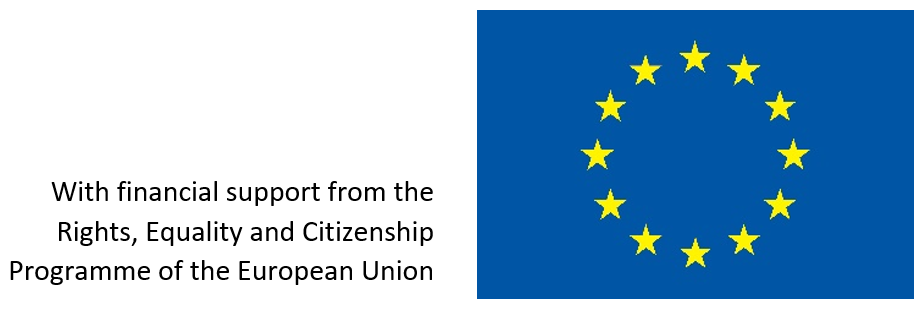“She didn´t say no”, “She meant yes when she said no”, “She was drunk but she knew what she was doing”, “She didn´t scream”, “She wore a short dress”, “You have to look at the way she was dressed. She was wearing a thong with a lace front”, “By her behaviour, her dress or by her look, she asked for it”, “Are you sure it was not your fault? Maybe you provoked him”, “There was no crying, no screaming. You didn´t push him away”.
These are forms of victim blaming and rape myths which are “attitudes and beliefs that are generally false but are widely and persistently held, and that serve to deny and justify male sexual aggression against women” (Kimberly Lonsway and Louise Fitzgerald in Psychology of Women in 1994). They are tied to stereotypes about how victims of rape should behave before, during and after the assault.
Another common assumption is that rapes are mostly committed by strangers even though the majority of rapes are committed by someone known to the victim, such as a friend, a colleague, a family member, partner or ex-partner. The ‘stranger myth’ sends the wrong message that a sexual assault committed by someone known to the victim is not rape and, consequently, it should not be a crime.
Gender biases are deeply rooted in the justice system. Victims of rape face social and legal barriers such as gender stereotypes, misconceptions of what sexual violence is, victim-blaming, credibility questioning, inadequate support and ineffective legislation. In the end, rapes are hugely under-reported due to lack of trust in the justice system or because of fear of not being believed. It takes a lot of courage and determination to report a rape and when women do so, they are often blamed and humiliated, being repeatedly asked what they did to provoke it or why they put themselves in a particular situation. Too often police, lawyers for defendants and judges question the victim of rape about what she was wearing and use the length of her dress as an indicator of the consent.
Lack of understanding of consent
At the moment, the Ireland case caused a shock since the lawyer of a man accused of rape cited the underwear worn by the victim as a sign of her consent, asking the jury to consider the underwear worn by the 17-year-old girl at the time she was raped by a 27-year-old-man. According to her, the teenager was lying and, as evidence, she pointed to how the plaintiff dressed, asking: “Does the evidence out-rule the possibility that she was attracted to the defendant and was open to meeting someone and being with someone? You have to look at the way she was dressed. She was wearing a thong with a lace front”. The man was acquitted and the decision raised many concerns from hundreds of women and men who protested across the country with posters and lace underwear with the phrase “This is not consent”.
Despite the law and policies can be good on paper, the lack of understanding of consent among legal professionals persists. From a recent report of Amnesty International which analysed rape legislation in 31 countries, only 8 out of 31 have consent-based legislation in place. In 2018, Iceland and Sweden (the 7th and 8th) adopted legislation defining rape on the basis of lack of consent. The other are the UK, Ireland, Luxemburg, Germany, Cyprus and Belgium. In the other European countries, for the crime to be considered rape, the law requires for example the use of force or threats, although this is not what happens in a great majority of rape cases. As a result, women survivors of rape receive no justice, fewer women choose to report to the police and the perpetrators go free.
In the EU more than 1 in 4 people believe that sexual intercourse without consent may be justified in certain circumstances, such as if the victim was drunk or under the influence of drugs, going home with someone, wearing certain clothes, not saying “no” clearly or not fighting back.
Just because a woman doesn’t have visible injuries, did not say “no” or did not show resistance, does not mean she was not raped. Freezing during a sexual attack has been recognized as a common physiological and psychological response. The victim is unable to oppose the assault, often to the point of immobility. According to a Swedish clinical study, 70 percent of the 298 women rape survivors assessed experienced “involuntary paralysis” during the assault. Again, in a study of women visiting an emergency rape clinic in Stockholm, 70% reported significant tonic immobility: a temporary and involuntary paralysis stemming from intense fear. These women had not passively consented. Their bodies had responded in a biologically normal way to a threat. Also dissociation is another automatic response to threat. Frequently, when people are in a traumatic experience they have no physical way of escaping, they sort of psychologically escape. The brain may dissociate to help a survivor get through the moment.
Moreover, having a sexual intercourse with a woman incapable of consenting because of alcohol or drugs, can never be an excuse to justify rape. It is rape.
The assumption that what a woman wears can provoke a man to rape her is caused by rooted stereotypes about male and female sexuality. However, women are being raped or assaulted while wearing any type of clothing and most convicted rapists could not remember what their victims were wearing at the time of the rape.
These narrow views of ‘consent’ under domestic criminal law do not capture the reality of how acts of rape and sexual violence are committed, and this misunderstanding affects how such acts are treated in criminal investigations, prosecutions and in criminal judgments.
Women’s right to equality before the law is frequently violated in domestic criminal jurisdictions because their evidence is doubted. Women are treated unequally since their right to freedom from sexual coercion is limited. In domestic jurisdictions concerning rape and sexual assault laws, the woman is deemed to consent to the act unless her resistance is made clear, especially by using physical resistance. This is contrary to an approach to the criminal law which incorporates the human right to equality. As stated by the European Court of Human Rights:
“The equality approach starts by examining not whether the woman said ‘no’, but whether she said ‘yes’. Women do not walk around in a state of constant consent to sexual activity unless and until they say ‘no’, or offer resistance to anyone who targets them for sexual activity. The right to physical and sexual autonomy means that they have to affirmatively consent to sexual activity” (M.C. v Bulgaria).
The European Court of Human Rights noted that “the development of law and practice in that area [of the crime of rape] reflects the evolution of societies towards effective equality and respect for each individual’s sexual autonomy” and also made it clear that including references only to physical force and resistance in definitions of rape are contrary to human rights law:
“[A]ny rigid approach to the prosecution of sexual offences, such as requiring proof of physical resistance in all circumstances, risks leaving certain types of rape unpunished and thus jeopardising the effective protection of the individual’s sexual autonomy”.
As previously mentioned, victim blaming is widespread in the justice system: sexist beliefs are tied to public stereotypes about behaviours that women should have. By relying on the outfit of the woman at the moment of the rape, holding that if the victim had behaved differently or had not provoked the situation, she would have not been raped, they blame the victim and excuse the perpetrator – In the end she should have seen it coming! – .
This attitude represents the patriarchal control on the woman which in past played an important role for the legislator in the regulation of women’s sexual life and where women’s emancipation was a risk for the supremacy exercised by men. However, when it comes to rape this control is still there. The trial is against the woman and due to superficial and close-minded attitudes, the victim does not report the violence because she feels ashamed and not supported. Who thinks that a certain kind of dress or underwear or make up means consent, should be looking deeper, and going beyond these harmful stereotypes. Physical and psychological harms caused by rape and sexual violence are severe and long-lasting. These include: the pain and suffering inflicted by being raped, gynaecological injuries, sexually transmitted infections, pregnancy resulting from rape, difficulties of seeking an abortion clinic or of raising a child born of rape, and psychological injuries such as depression, post-traumatic stress, and suicidal thoughts. As a survivor said “they [juries] … don’t understand how it feels to be raped. They don’t understand that rape is like being murdered but still being alive”.
Rape is a violation of human rights, a grave attack to the physical and mental integrity and sexual autonomy of a person. It impairs her right to life, physical and mental health, personal security, freedom, equality before the law, her right to be free from discrimination and torture and other ill-treatment. When the criminal justice system fails to offer the victims a sense of justice, the effect is distress similar to the experience of being raped. Their autonomy and freedom are taken away.
In Prosecutor v Akayesu, the judgment identified rape as a form of torture:
“Like torture, rape is used for such purposes as intimidation, degradation, humiliation, discrimination, punishment, control or destruction of a person (..)”.
Changing social and cultural patterns
Under international and regional human rights law, states are required to counter and eradicate gender-based stereotypes and discriminatory attitudes towards women and girls to prevent gender-based violence. Remedies should seek to transform laws, policies and attitudes that are the root causes of sexual violence crimes.
Article 12 of the Istanbul Convention obliges states to take the necessary measures to promote changes in the social and cultural patterns of behaviour of women and men with a view to eradicating prejudices, customs, traditions and all other practices which are based on the idea of the inferiority of women or on stereotyped roles for women and men. Article 36 of the Istanbul Convention requires the criminalization of rape and all other non-consensual acts of sexual nature. This acts are crimes against a person´s bodily integrity and sexual autonomy and rape has to be defined by the lack of consent to sexual intercourse. The lack of consent has to be at the centre of any legal definition of rape and other forms of sexual violence.
Under the United Nations Convention on the Elimination of All Forms of Discrimination against Women, states are obliged to take all appropriate measures to modify the social and cultural patterns of conduct of men and women, with a view to achieving the elimination of prejudices and customary and all other practices which are based on the idea of the inferiority or the superiority of either of the sexes or on stereotyped roles for men and women.
The CEDAW Committee recommended that all legal procedures in cases involving crimes of rape and other sexual offenses should be impartial and fair, and not affected by prejudices or stereotypical gender notions. To achieve this, a wide range of measures are needed, targeted at the legal system, to improve the judicial handling of rape cases, as well as training and education. to change discriminatory attitudes towards women (Vertido v The Philippines).
Moreover, the CEDAW Committee has urged several European states to bring their legislation on rape in line with international standards, including the Istanbul Convention, and to define rape on the basis of the absence of consent.
Showing support and empathy towards victims of rape and sexual violence in society and justice system is an important step for making a real change. There has to be a shift in the culture concerning rape. Changing the law about the definition of rape, rising awareness, training legal professionals and creating special courts for crimes of rape and sexual violence are fundamental steps to change attitudes and mentality that sex without consent is rape. Furthermore, what a woman was wearing when she was raped is simply not relevant since no type of dressing is an invitation for sex or implies consent. Rape is never the victim’s fault. The only responsible one is the rapist.
By Chiara Paganelli , WAVE Intern
Photo by elwain_blackmoon on Instagram
Sources:
https://www.scmp.com/news/world/europe/article/2173500/thisisnotconsent-women-share-g-string-underwear-photos-online
https://www.nbcnews.com/news/world/thisisnotconsent-protesters-wave-underwear-after-ireland-rape-trial-sparks-fury-n936501
https://www.cbsnews.com/news/ireland-thong-rape-trial-consent-thisisnotconsent-protests/
https://www.washingtonpost.com/posteverything/wp/2016/04/13/why-dress-codes-cant-stop-sexual-assault/?utm_term=.214213a18be2
https://www.amnesty.org/en/latest/campaigns/2018/11/rape-in-europe/
https://aineupstrmedia.blob.core.windows.net/media/19576/rape-in-europe_regional-overview_updated_7nov18.pdf
http://www.bbc.com/future/story/20181102-why-dont-rape-and-sexual-assault-victims-come-forward?fbclid=IwAR1v6aechWgGUo-eH6vbLVF3fS9Y8QgkrcbL1OmOM6Qp590dyUT_Gzwvilo
http://pennsylvanianow.org/the-rape-myth-problem-within-the-judicial-system/
https://www.amnesty.org/download/Documents/32000/ior530012011en.pdf
https://www.amnesty.org/en/latest/campaigns/2018/11/did-you-know-this-about-rape/






